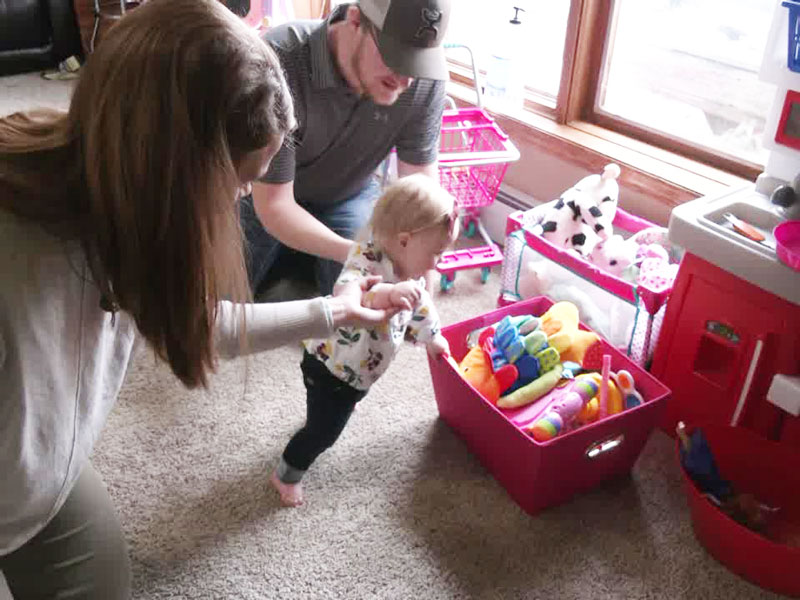From the standpoint of both a provider and patient, Kristen Gruis knows firsthand the importance of quality rural health care.
Gruis is a pharmacist at Sanford Health in Worthington, Minnesota. A relatively large, small town, Worthington’s population tops out right around 13,000. The premier leader in rural health care in the United States, Sanford Health has invested in cities like Worthington across the Midwest.
As a pharmacist in the hospital, Gruis knows how top-notch the care is in Worthington. However, she hadn’t necessarily experienced it as a patient. That changed when her infant daughter Reagan got sick earlier this year.
Mystery illness turned RSV
Over a weekend, Reagan got sick. Gruis decided to bring her in on a Monday, thinking she might’ve had an ear infection.
They saw a pediatrician at the Sanford Worthington Clinic. They initially thought it was “something viral,” according to Gruis. Gruis and Reagan went home with some supportive measures.
By Thursday of that week, Reagan wasn’t doing any better.
“So, we brought her back (in). She ended up having double ear infections and was diagnosed with RSV at that time,” recalled Gruis.
RSV is an infection that initially looks like a cold. However, in children, the infection can move to the lungs, turning the infection into a severe respiratory disease — most notably bronchitis.
What’s worse is there’s no vaccine or treatment for RSV.
The good news was at the time of her RSV diagnosis, Reagan’s oxygen levels were “looking good in clinics. We thought maybe she’s getting over the hump of it,” Gruis said.
The bad news was a few days later, over the weekend, she wasn’t eating or drinking very well. Gruis took her back to the hospital for fluids. Her oxygen levels still looked good, so once again, she was sent home.
“Unfortunately, over that weekend she got pretty sick, and her oxygen started dropping. So, on Monday we saw our doctor in clinic, and we ended up being admitted to the hospital later that day,” she said.
Treatment for infants with RSV isn’t entirely specific, and is mainly supportive, contrary to what some patients think. The main forms of treatment include:
- Oxygen
- Suction of the nose
- IV fluids
- Tylenol/ibuprofen, used to treat other respiratory infections
So, in a sense, it’s almost a waiting game until the child makes a recovery.
Thankfully the Gruises didn’t have to wait too long. After a few days, Reagan started to recover.
Quality hospital and clinic close to home
Gruis, who has two other children besides Reagan, was thankful Reagan was able to receive care in Worthington.
“It was huge for us to be able to stay in Worthington and not have to go to Sioux Falls. We want to be able to still get them picked up from school and get home and at least see us a little bit,” she said.
“We really did not want to go to Sioux Falls if we didn’t have to.”
Aside from convenience, the Gruises knew their daughter’s team provides expert care in Worthington, making them feel more comfortable sticking around.
“We have great care in Worthington. The fact that I was able to see our doctor in clinic, and then have her in the hospital stay too, she knew exactly what we were going through,” Gruis said. “She had seen that at every stage.”
Learn more
- Sanford Worthington named top rural & community hospital
- Sanford announces $300 million for rural health care access
- Is it a cold or RSV? Know when to call your child’s doctor
…
Posted In Children's, Rural Health, Worthington
